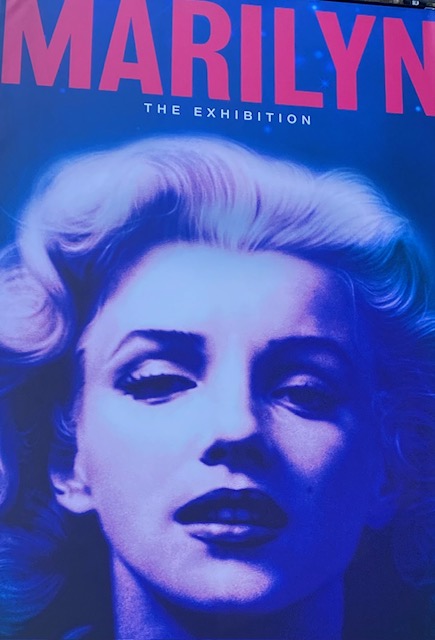Marilyn Monroe: A Pioneer

Yesterday I visited the Marilyn Monroe exhibition at the Arches by London Bridge. It has since got me thinking about women, our sexuality and how much progress we have made in the last sixty years.
Marilyn was born in 1926 during a time of real change when advances in technology were moving at a fast pace and women were coming out of the kitchen for the first time while fighting for their positions in the workplace. The androgynous look began to soar in popularity with women cutting their long hair into short bobs, wearing masculine trousers and flat shoes during the day. The open approach to sexuality was one of the new-found freedoms of the era. A child of the roaring twenties, Marilyn defended herself against prudish expectations of women throughout her life.
Walking into the exhibition was like stepping back in time. It took me deep into Marilyn’s world with a close look at her personal pieces including make-up, shoes, books, kitchen utensils, films scripts and of course her iconic outfits. But it wasn’t all about the glam. The exhibit also delved deep into the person behind the persona. Her highs and lows throughout her short life.
One of the most misunderstood icons, Marilyn Monroe was often portrayed as the ‘dumb blonde.’ But Marilyn was so much more than that. She was an activist, a businesswoman, a pioneer who was way ahead of her time. She used her sexuality to her advantage and to get ahead in her career. Often feeling like an outsider, Marilyn was ambitious and had a hunger for recognition.
A symbol of femininity and female empowerment, her beauty and stage presence were so mesmerising that her intelligence was often overlooked. However, Marilyn was incredibly intelligent and enjoyed reading Rilke, Tolstoy and psychoanalytic literature in her spare time.
The icon turned down numerous marriage proposals that would have secured her vast wealth even when she was as ‘poor as a mouse’ so that she could carve out a career for herself. Eventually she created her own production company: Marilyn Monroe Productions, during a time when women had very little respect when it came to business especially in Hollywood. But Marilyn was not afraid to challenge the male-dominated film industry. In doing so, she paved the way for future actresses to take similar control over their careers.
Marilyn used her position of fame to fight against racism and promoted racial equality in the face of adversity. I adored reading of her friendship with the African American jazz singer: Ella Fitzgerald. Marilyn helped Fitzgerald to secure gigs at the Mocambo nightclub which was known to reserve bookings for white artists only. But Marilyn insisted and made an agreement with the owner that if he booked Fitzgerald then she would sit at the front row of every performance. As Ella Fitzgerald herself said, “I owe Marilyn a lot. She was an extraordinary woman and ahead of her time.”
There will never be another Marilyn Monroe. She is irreplaceable. I find it hard to watch footage of the icon without feeling totally mesmerised even today. Even in death, our fascination with the world’s most iconic blonde bombshell continues and may do so for many more years to come.
“I knew I belonged to the public and to the world. Not because I was talented or even beautiful, but because I had never belonged to anything or anyone else.”
Marilyn Monroe
